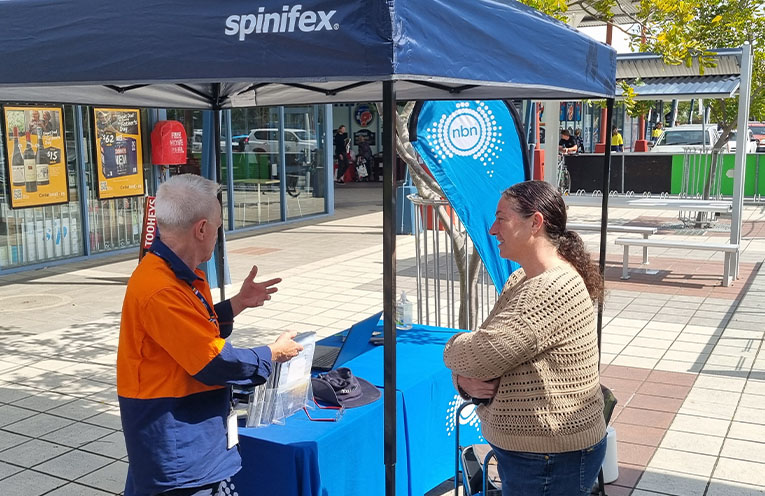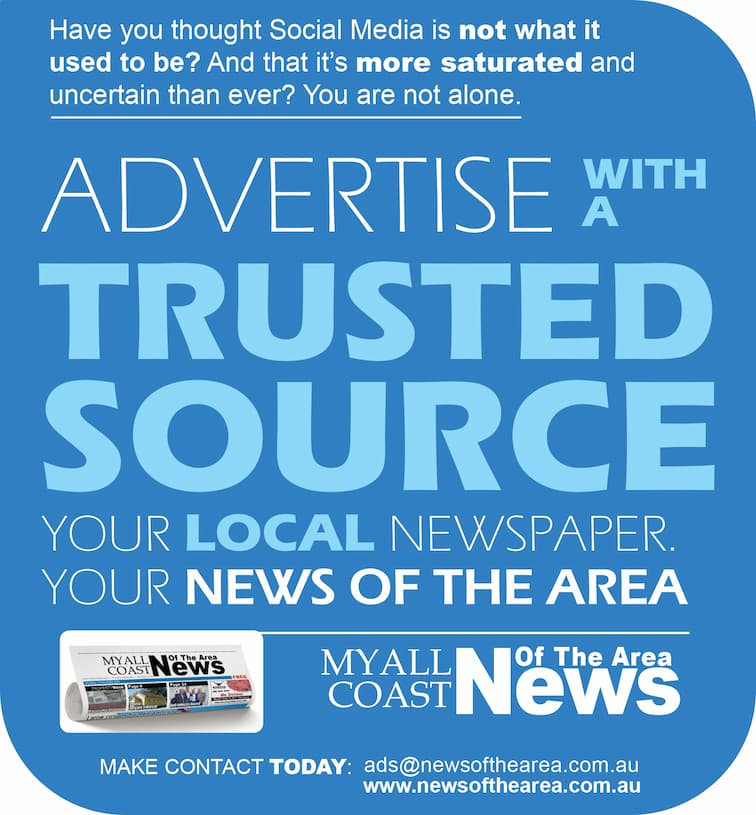NATIONAL Broadband Network promises from over a decade ago are finally being realised on the Myall Coast.
Representatives from NBN Co, a state-owned corporation that operates Australia’s NBN network as the nation’s wholesale broadband provider, visited areas of the Myall Coast last week to explain the connection options that are or soon will be becoming available in the region.
Much like electricity supply, telecommunications consists of wholesalers, retailers, and customers.
Customers are the end-users, including physical households or business premises.
The wholesaler owns and operates the network infrastructure – the cables that run from pit to pit to manhole in the ground, or between poles, and effectively ‘supply the internet’ in the same way that the power-generation company supplies electricity to the grid.
“Wholesalers do not typically interact with customers, as that is the main role of retailers – and they will routinely direct customers to contact their retailer first,” an NBN Co representative explained.
“Retailers sell contracts for connection, keep track of usage, and send out the bill.”
Many misconceptions exist regarding the status of Telstra, which is now just a retailer, but was the main, government-owned telecommunications provider in Australia for decades.
Currently the Australian Government indirectly owns less than one percent of Telstra Corporation, via the federal Future Fund, after a series of sell-offs between 1997-2011.
A key difference between electricity and internet services is that everyone gets the same 240-volt supply to their house, while internet supply is still measured in data speeds, measured in megabits per second (mbps).
Speeds can, and will, be ‘choked down’ depending on the usage contract the customer signs, which will have the internet download speed as its main defining detail.
‘Fibre to the Node’ (FTTN), the most prevalent existing internet/landline technology, consists of silica optic fibres to a point, then existing copper wires up to hundreds of metres to the outside wall of customers’ houses, and offers download speeds of 25-100Megabits per second (Mbps), and 50Mbps upload speeds.
‘Fibre to the Home’ (FTTH), the upgraded technology, brings optic fibre to the outside wall directly, and offers the fastest possible internet speeds, up to a whopping 1000Mbps, and 5-20Mbps upload speeds.
“FTTN speeds are rated for 4K resolution on up to four devices at once, consistent online gaming and video calls, and, typically, a 10GB file would take 15-65mins to download, while a 1GB file would take 9-34mins to upload,” is the way nbnCo officially describes ‘usage needs’ for customers considering their retailer contract.
“FTTP speeds are designed to support 4K cinema-quality streaming, great for online gaming, and high-quality video calls – all while multiple others are also online with the same connection, and can typically download a 10GB file within four minutes, and typically upload a 1GB file within the same timeframe.”
Customers are advised to consider what they actually use their internet for (“usage needs”), what they want to use if for, and therefore whether they need higher speeds and the associated higher costs.
Another consideration is the quality and calibre of the wifi router in use, which will limit the ability to benefit from the higher speeds.
In 2018, NBN Co stated that the average Australian household had around 14 devices connected to their internet.
In 2025, the number is 25, and by 2030, NBN Co expects each household will have an average of 44 devices connected. NBN Co lists up to 43 potential retailers, but not all will offer their services in all areas, and the major retailers in the Myall Coast area are Telstra, Optus, Vodafone and Aussie Broadband, each competing for user contracts.
South Pindimar missed out on the original NBN rollout due to rocky terrain, and the new services may well not be available in all areas, either.
By Thomas O’KEEFE




